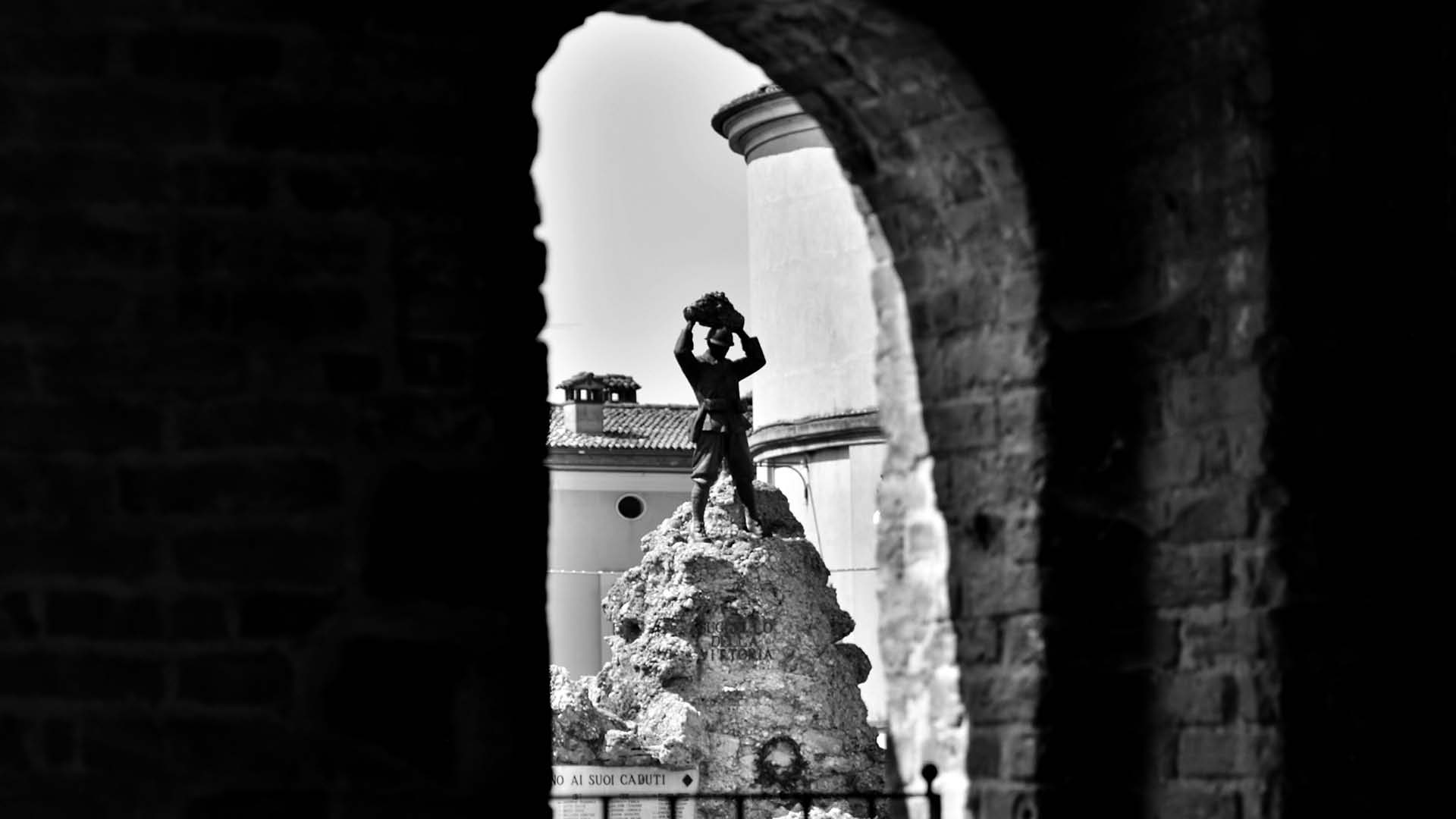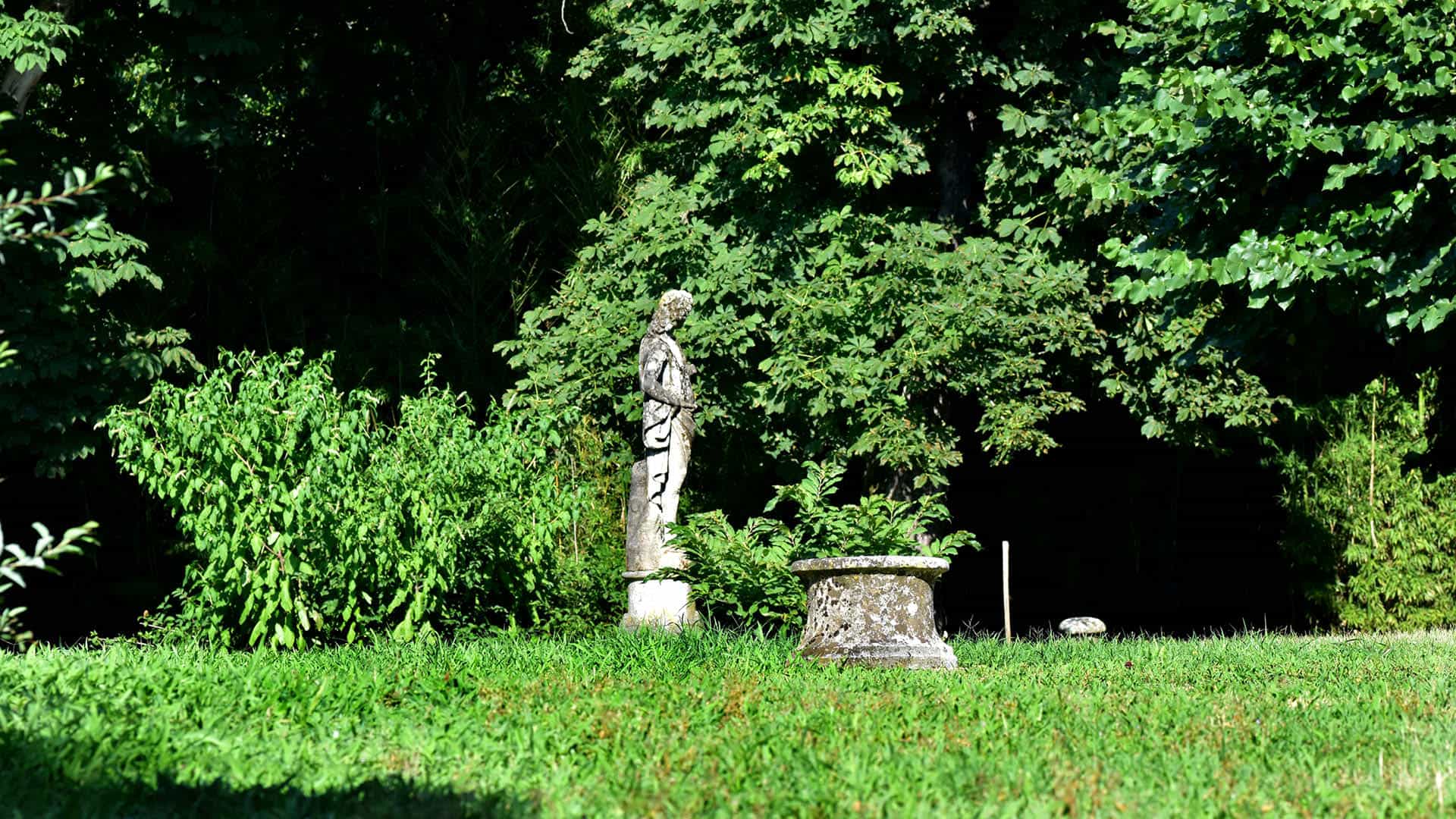 Tutti gli itinerari
Tutti gli itinerari
Putting feet in the springs’ water
The film shows the Po Valley and the Cremasco area. Oliver and Elio cycle to villages, woods or springs. They observe and interact with nature: they lay down on the grass, they put their feet in the springs’ water. These places were tourist destinations in the past: in the 1600’s noble families used to spend holidays in their country houses , far away from the city

The small lake was a private gravel quarry until the Regional Park of the Serio river bought this area. During the night the lawn is covered with dew, so it’s soft and fresh in the morning.
The branches of poplars and willows provide shelter from the light of the sun. There’s a bush near the lake where you can explore and pic-nic. Moreover there’s a picnic area with benches, tables and a gazebo for dining comfortably. You can sit on the shore of the lake, but you are not allowed to swim in.
As an alternative to packed lunch, traditional meals can be enjoyed at the “Al Castel” family restaurant.

The film focused on the historic Albergoni villa in Moscazzano, which is not the only important mansion of the area.

The shrine of Santa Maria del Cantuello is a small church of the XI century, but there are no documents confirming this hypothesis. The building underwent a renovation during the XVII century. On the facade there is a sixteenth-century fresco, while the interior is decorated with various frescoes of different eras

“This is my place. All mine. I come here to read. I don’t know how many books I read here. The source is situated in the mountains: the Orobie Alps, the water comes from there”
Elio describes Quarantina’s springs: a private place, where the attraction between the two guys becomes evident; Elio, lying on the lawn, says to Oliver he loves their relationship: the complicity, the exchange of ideas, the time together. Oliver kisses him.
You can take a break and soak your feet in the water: it will seem freezing, but the heat produces this feeling, in fact the temperature is 11 degrees throughout the year.
“In ancient times the fountains were considered a gift of heaven: the vegetation grew even in the cold winter months. In fact, the waters of the spring, after an underground journey through clay, suddenly emerge in a series of pollas: they are clear and at a temperature between 10 and 11 degrees all year round. The cultivation technique is called “marcita” developed by the Cistercian monks who reclaimed these lands around the year 1000 from the Benedictine centre still existing today of Abbadia Cerreto.”

The “Quarantina” is very special for its channels’ spider web. The Fontanile was contested by the most important neighbouring municipalities because of its naturalistic value. Many villages focused on promoting this place and making it the “locus amoenus” that everybody loves.
Every year in May, the city of Crema and Capralba organize the “Giro dei Fontanili” (tour of the springs). It is an event in which anyone can visit the Fontanile’s location riding their bike. The main aim is to raise people’s awareness of the environment. The Fontanili’s habitat is very brittle: if the falls (falde) are not protected in the right way, they might drain, causing the death of the local flora and fauna.
If you want to taste the best Cremaschi dishes, you should try Severgnini’s restaurant (piazza Europa, Capralba) or in La Torretta restaurant (via Maggiore, Farinate). Moreover, if you want to buy local products, you can visit RHO farm (via Maggiore, Farinate) that produces all the traditional Cremaschi cold cuts, but, if you prefer eating cheese, you should visit the Merati dairy (via Panizzardo, Capralba).

Elio accepts to go to Pandino with Oliver to collect some documents about his studies. The two guys decide to ride their bikes because of the sunny day, and they arrive at Piazza Vittorio Emanuele III in Pandino. Oliver enters a bar to buy a packet of cigarettes, and then he goes with Elio near “Monumento dei caduti’s” little gate. They analyze the theme of feelings and their interior conflict. Their way to communicate is represented by the way they walk, which is circular and involves also the monument, which becomes the third actor in scene.
The soldier in the monument is between them, but they are emotionally close and they make a connection with each other. Bar Castello’s owner, in which Oliver buys his cigarettes, appeared in the film. He saw all the process that brought the square back 30 years, for example, they turned an estate agent into a grocery store and an office of the Socialist Party. The bar’s cigarette vending machine was covered with a sign that listed the ice creams they sold. On the outside, the chairs and the tables were also changed into some old ones. You should stop and watch the square, go around the “Monumento dei Caduti” and find all the monuments that were aged in the film.

Then change your path and walk towards the Castello Visconteo.
Around 1355 Barnabeo Visconti, Lord of Milan,had Pandino’s castle built to have a place to engage in his favourite hobby: hunting. The surrounding territory is full of lush flora and fauna.
This castle is built like the typical Visconti’s castles: it has a square plan surrounded by four towers, a courtyard with a porch with pointed arches on the ground floor and a loggia with rectangular pillars. Many of the original decorations can be seen thanks to recent restorations. Originally the East part of the ground floor was another porch in which banquets were organized.
At the beginning of the fifteenth century, Crema became lordship and Giorgio Benzoni, who was Pandino’s count, became its Lord. From 1470 also Ludovico Maria Sforza, known as Ludovico il Moro, was Pandino’s lord and lived in this castle. If you want to take a guided tour of the castle, you should go to the tourists’ office inside the castle.
Nowadays this building is the seat of the municipality, and it also accommodates “Scuola Casearia” and a boarding school. This is a really unique school: here students learn how to produce the typical Cremasco cheese. We strongly recommend tasting “Salva Cremasco”, a typical cheese, which is part of an amazing speciality called “Salva con le Tighe”.

Guadagnino chose Villa Albergoni as the Perlman’s residence. Here two scenes were shot: The first one is full of euphoria: Elio and Oliver are swimming in the lake with a funny group of friends. In the second scene it is early morning, Elio asks Oliver to go for a swim but there’s embarrassment. The two friends are swimming far apart.Over the years, Moscazzano’s territory, mainly exploited by agriculture and livestock, has remained strongly rural. In the film this rural atmosphere has not been censored, but wisely used as a sweet and reassuring background.
The inhabited centre develops from the central nucleus, the parish church, around which the residences of the farmers have gathered over the centuries. Inside the church, built in the XVIII century, you can admire the works of artists from Crema, like Angelo Bacchetta and Picenardi. Now you reach Villa Albergoni, the wonderful setting where the characters of the film loved, rejoiced, cried and suffered. Currently the villa is closed and inside it is completely empty. As it is private property, any attempt to enter is prohibited, but it is still possible to admire the beauty of the building and the main facade through the gate. The villa was built on the ruins of an ancient castle. The Moscazzano fiefdom was entrusted in 1499 to the powerful Vimercati family, which in those years transformed the ruins of the castle into a country residence. The guardian of the villa is not the only one who has been allowed to participate as a lucky spectator during the set. Guadagnino wanted to involve other local people in the shooting, such as Signora Pasquina, a skilled cook from Moscazzano who appears in the kitchen while preparing the “tortelli cremaschi”. Among the people included in the project there is also the chef and owner of the restaurant located in Colombare di S. Carlo, a small hamlet of Moscazzano, who prepared the catering for the crew during the shooting period. For the occasion, the halls of the former restaurant in the town center were reopened and the technicians and actors were able to refresh themselves between takes without having to move.
It is said that Guadagnino was particularly careful about small details, especially the gastronomic ones. Finally, other citizens have contributed by lending themselves as appearances or by lending their vintage cars.

The scenes of the blue bus were shot in Montodine’s square. The film also documents the life of public transport in the 80s, addressing the theme of travel. Oliver and Elio make several trips: the first trip is the one of the American boy to Italy, then the one to Sirmione and Bergamo and finally the return trip to the train station. We see the actors repeatedly getting on trains or waiting at the bus shelter. The situation of public transport has not progressed much, and the inland towns of the Cremasco that do not have access to the main roads are still connected to each other by sobbing blue courier races that have offered the same service for half a century. Continuity has therefore allowed the small towns to maintain their urban and structural characteristics and made them the suitable locations for the film. The landscape of Montodine is the typical Cremasca countryside, mainly characterized by agricultural activity. The constituent elements of the landscape are substantially the Adda and Serio rivers. After crossing the Municipality, the Serio River flows into the Adda al Boccaserio.

Montodine, a rural town, contains some farmhouses that have preserved architecture of past centuries; walking through the streets of the town, you will meet an example located in via Fadini. The construction is probably from the seventeenth century and still maintains the structure of the Cremasca farmhouse, characterized by the presence of the stable, the barn above and the house next to it. Another important symbol of Montodine is the monumental Palazzo Benvenuti and its Tower. The building is located near the bridge over the Serio river. It was presumably built in two phases. It looks like a country residence, equipped with a tower built in 1646 by Gerolamo Benvenuti (aristocratic family from Montodine). The building stands on its seven floors, including the attic. It was built and then remodeled in different eras until the complete renovation of 1803. On the death of the last descendant of the Benvenuti, the palace was given to the parish. The time has come to say goodbye. We hope you enjoyed the dual itinerary in the lands of “Call me by your Name”. For the return we recommend an alternative itinerary which, without lengthening the road, will lead you to a particular place: San Donato farmhouse. Follow the directions on the map we have provided you. S. Donato is a farmhouse built in the 15th century by the Benvenuti. It is dominated by an ancient tower and flanked by a small recently restored church club. It is said that in 1680 an epidemic broke out in Moscazzano, and it caused the death of many children. Tradition says that they were buried where today there is the Cappella dei Murtì: in fact, excavations conducted in the 1920s around the church brought to light small human remains.

Info
The itinerary starts from “Laghetto dei Riflessi” in Ricengo









































